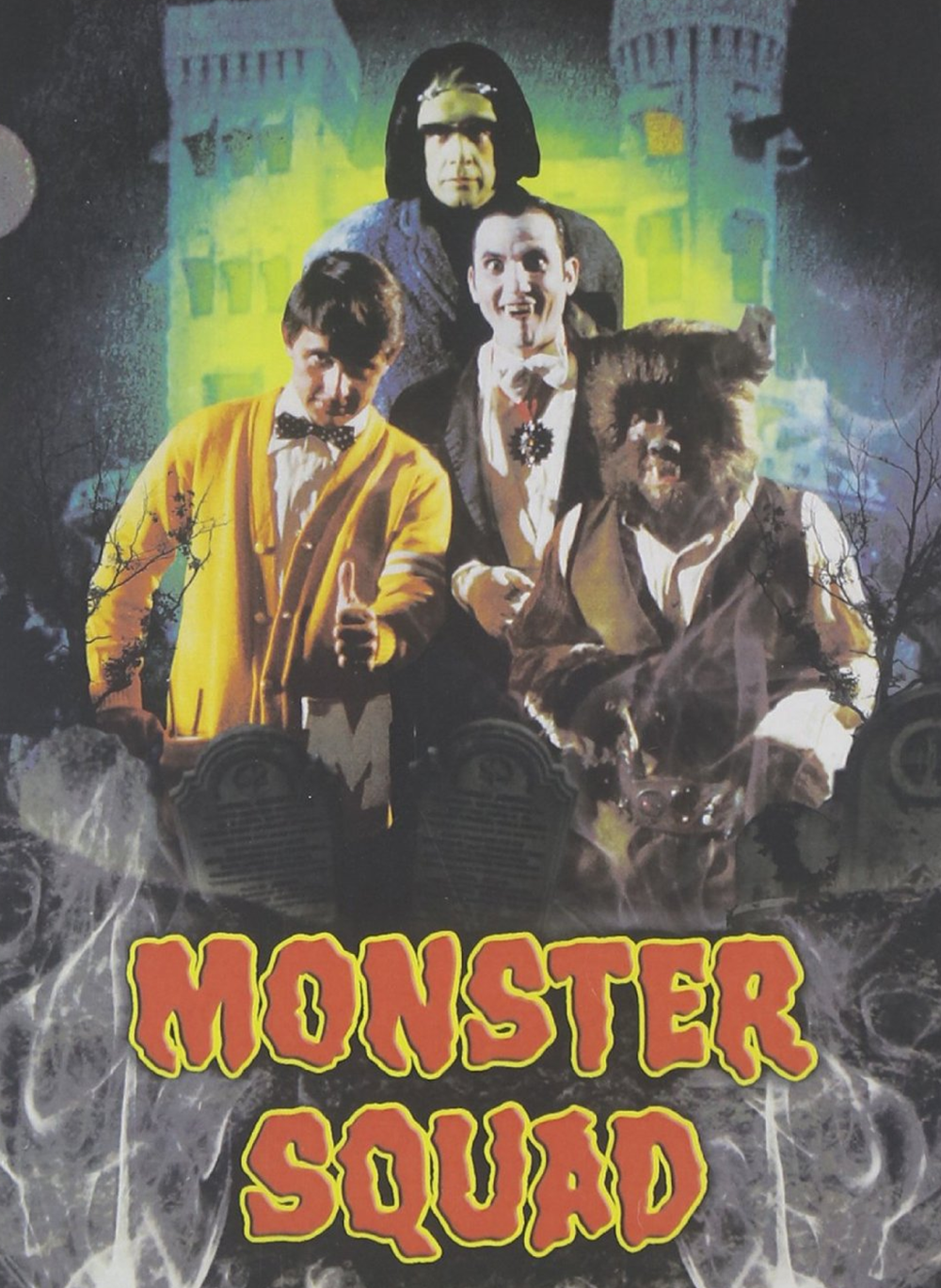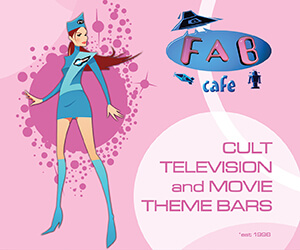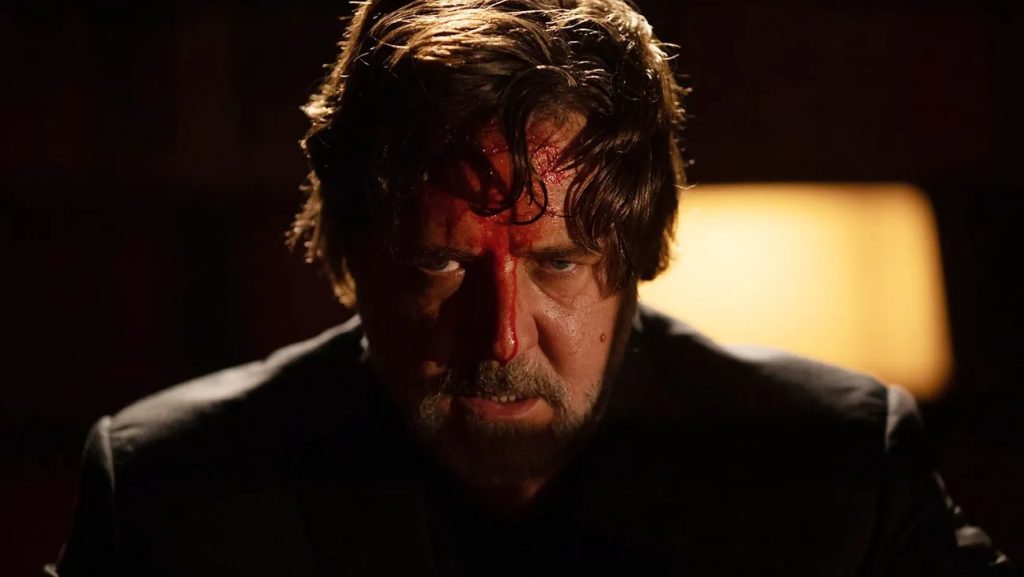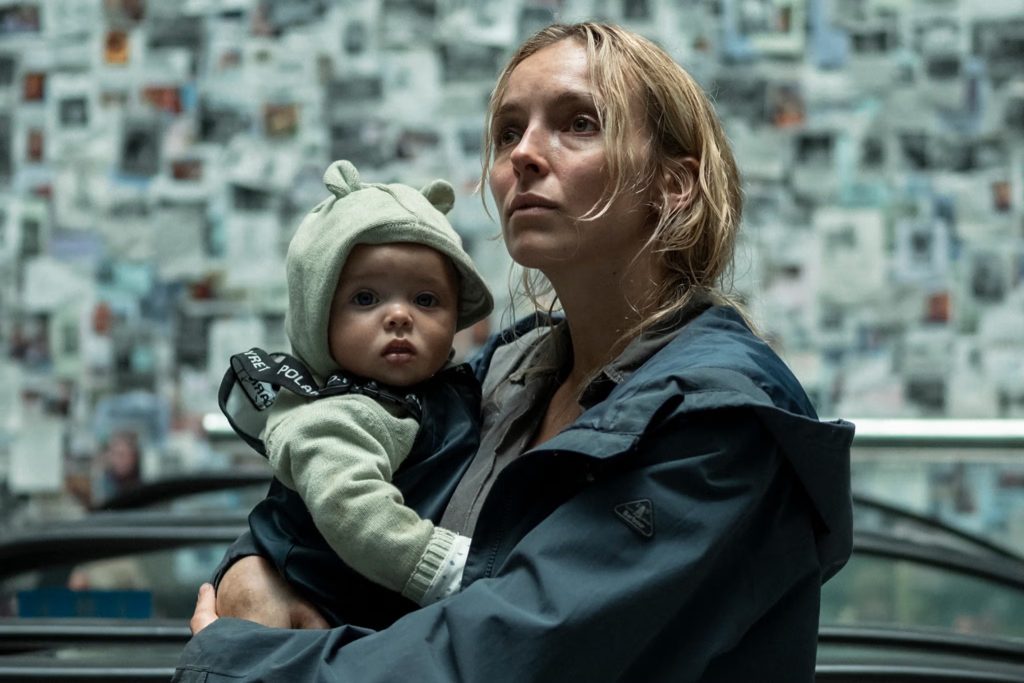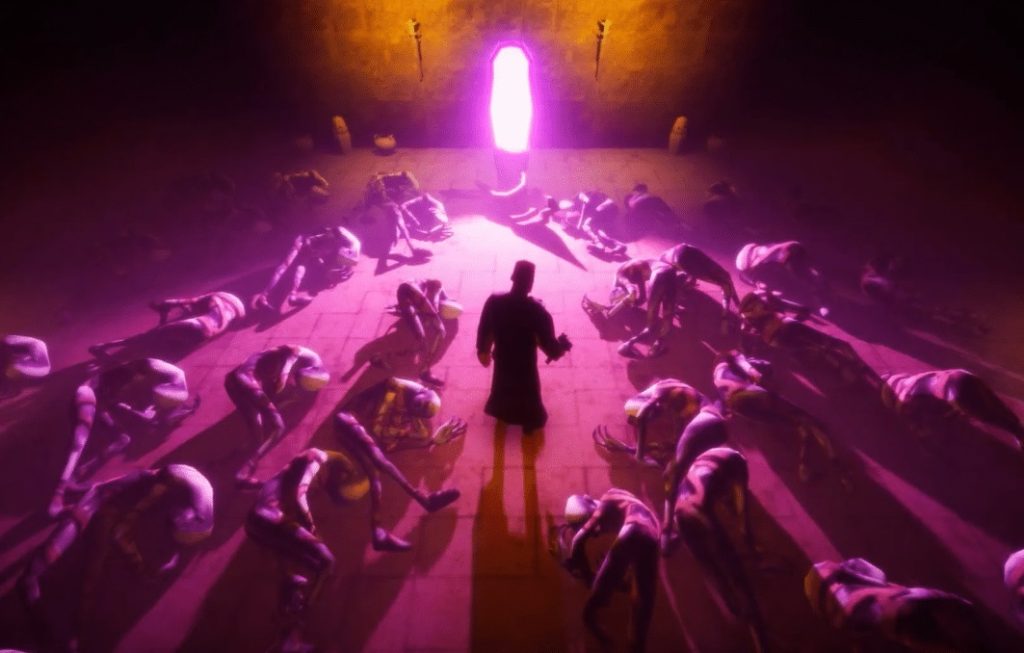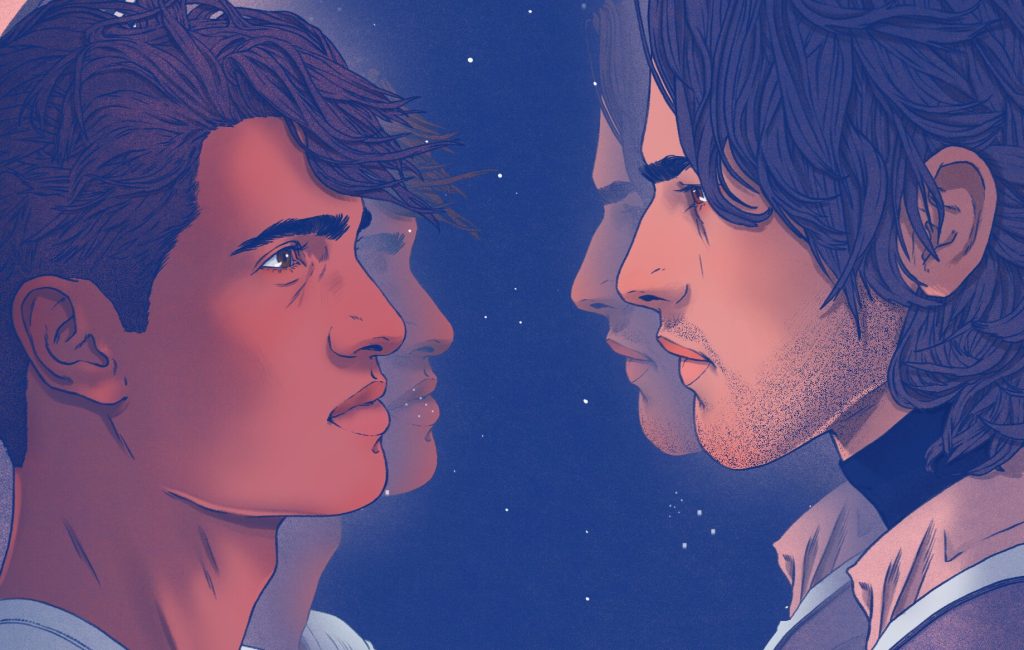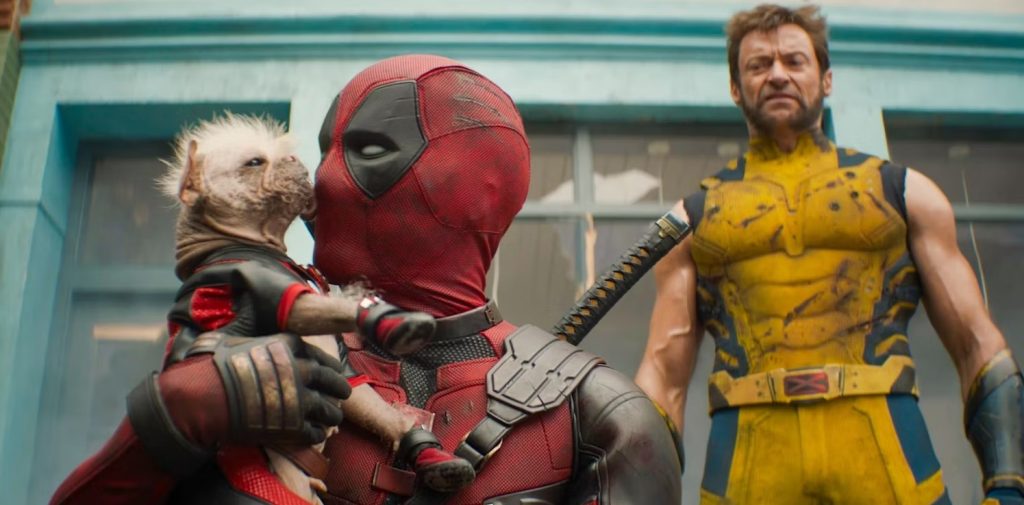Ah, telephemera… those shows whose stay with us was tantalisingly brief, snatched away before their time, and sometimes with good cause. They hit the schedules alongside established shows, hoping for a long run, but it’s not always to be, and for every Street Hawk there’s two Manimals. But here at STARBURST we celebrate their existence and mourn their departure, drilling down into the new season’s entertainment with equal opportunities square eyes… these are The Telephemera Years!
1976-77
For some reason – the US’s failure in Vietnam is often blamed – the American public could not get enough of the rock ‘n’ roll era in the 1970s, a point never more heavily underlined than with the success of Grease in 1978. It started before that, of course, with George Lucas’s American Graffiti giving birth to the Fonz on TV. It was almost as if the whole country wanted to forget the last decade or so and that Happy Days was the number one show for 1976-77 is no surprise. That spin-off Laverne & Shirley is number two is perhaps a little more surprising, but there’s Korean War comedy M*A*S*H at number four to ram things home. Outside this yearning for the past but also making headway in the TV ratings were telefantastic Jiggle TV mainstays Charlie’s Angels and The Bionic Woman, as well as The Six Million Dollar Man, Baretta, and Hawaii Five-O; if there was somewhere the US TV viewing audience wanted to be in 1976 it was not the 1976 outside their door.
Several big shows bade their farewells this season with The Streets of San Francisco finally running out of road, the departure of The Mary Tyler Moore Show and Phyllis setting women’s emancipation back a few years, and Sanford and Son a victim of America’s disposable Capitalism. Coming in to take their places were interfering coroner Quincy, bear-worrier Grizzly Adams, and Roots, the first of the blockbuster mini-series that gave schoolchildren everywhere license to say Kunta Kinte. But those were all shows that adults liked, even if the kids did think Steve Austin was bostin. Let’s look at four shows especially made for kids…
Monster Squad (NBC): Sometimes the smartest concepts are hidden in the history of forgotten children’s shows and Monster Squad – one of three new series for 1976 from D’Angelo-Bullock-Adams Productions – is certainly up there with off the wall, fantastic origins for its characters. Criminology student Walter takes a job as a night watchman at a wax museum and vibrations caused by the super “crime computer” he builds to help pass the time bring waxworks of Dracula, the Wolfman, and Frankenstein’s monsters to life. Burdened by their past misdeeds, the trio decide to become superheroes…
Yes, this is the Universal monsters crossed with Batman, unsurprising given William P D’Angelo and co-creator Stanley Ralph Ross worked on that series, bringing its camp charms to this delightful oddity, with a parade of supervillains that would have been very much at home in Gotham City. Anchoring things as Walter was Fred Gandy, perhaps best known at that point for a guest spot on Maude (or as Herman the German in Death Race 2000 to those with a different palate), and the monsters were played by Henry Polic II and ex-professional wrestlers Buck Kartalian and Mike Lane.
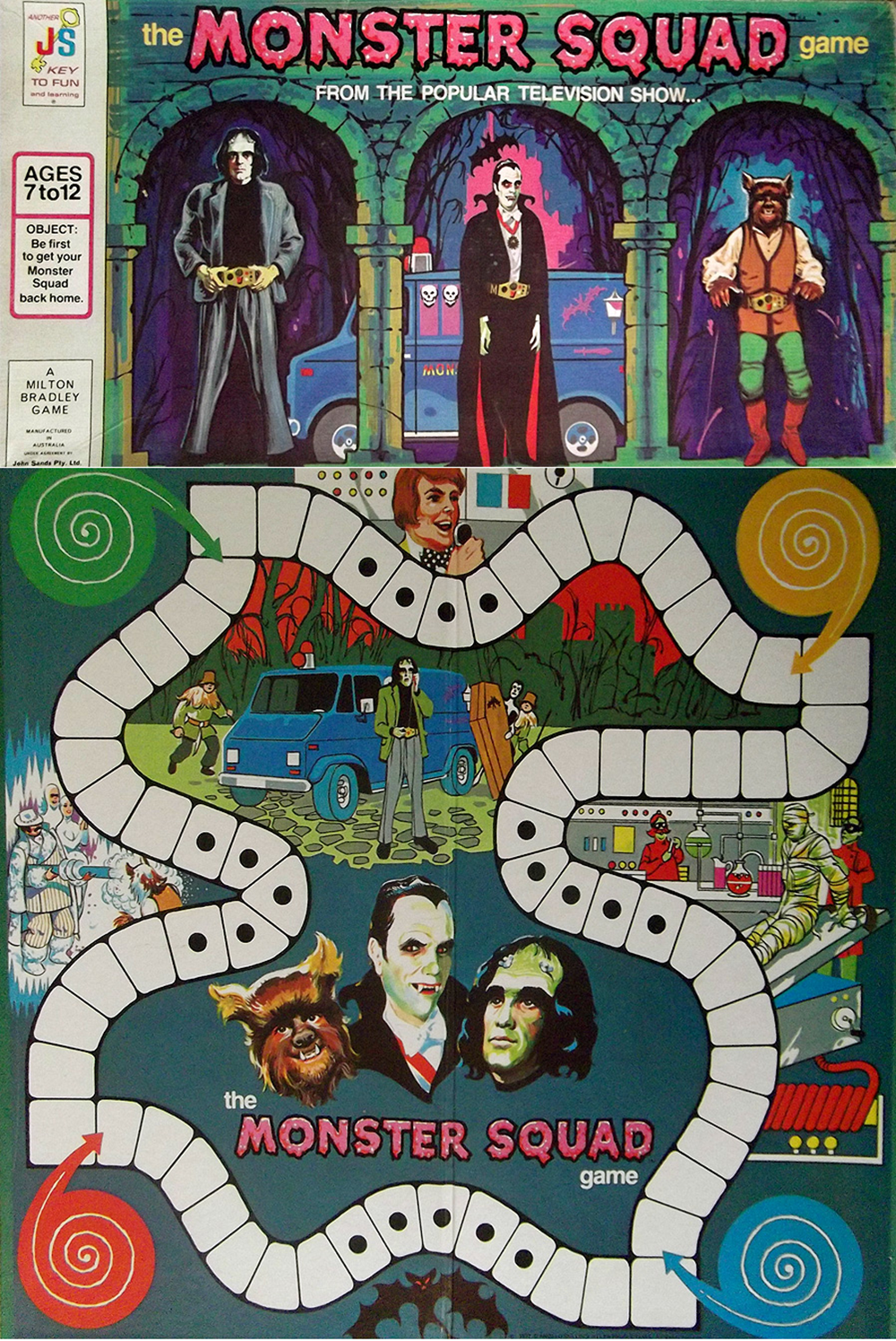
Polic had played Dracula in a commercial a year before landing the role on Monster Squad, while Lane also had previous as Frankenstein’s monster, both B-movie Frankenstein 1970 (1958) and an episode of The Monkees. Kartalian, who wrestled as The Perpetual Motion Man, was playing Frank W Wolf (the W stood for “Were”) for the first time. The first episode saw the trio go up against the dastardly Queen Bee (Bewitched‘s Alice Ghostley), with subsequent adventures pitting our heroes against The Tickler, The Ringmaster, Lorenzo Musica, the hermaphroditic Albert/Alberta, and The Astrologer, the latter portrayed with aplomb by Lost in Space’s Jonathan Harris. Each member of the Monster Squad had a utility built and they travelled in the Monster Van, keeping the city safe to the delight of Mayor Goldwyn and Officer McMacMac.
The series debuted on September 11th 1976, running for thirteen episodes, the standard length for a Saturday morning network TV show. Despite its obvious charms, it never returned for a second season, a fate which befell most of DBA Productions’ shows (only 1974’s “dog as The Fugitive” show Run Joe Run came back for a sophomore outing). The show was released on DVD in 2009 but is long out of print; luckily the episodes are easy to find on YouTube and well worth investigating – just don’t invent a vibrating super-computer to do it.
Tarzan, Lord of the Jungle (CBS): It’s difficult to explain the grip that decades-old heroes like Tarzan, Zorro, and the Lone Ranger had on the imaginations of yesterday’s kids, but they were staples of children’s television right into the 1980s, when space-going adventurers took over. It’s odd, then, that Filmation’s Tarzan, Lord of the Jungle, which premiered in September 1976, was the first time Edgar Rice Burroughs’s jungle hero had been animated for the Saturday morning audience, although there’d been no shortage of big and small screen live-action fare over the years.
Of all the cinematic and televised Tarzans, the show was probably the most faithful to Burroughs’s original books, featuring several of the lost cities that were a running theme in Tarzan’s adventures. The animation, too, is close to the classic newspaper comic strip drawn by Burne Hogarth, using the rotoscope technique developed by Max Fleischer in 1915 and first used on his Out of the Inkwell cartoons. Tarzan was one of the first times rotoscoping was used for a TV cartoon, and Filmation would go back to the technique for future productions such as The Lone Ranger (1980), The New Adventures of Zorro (1981, told you!), and Blackstar, among others.
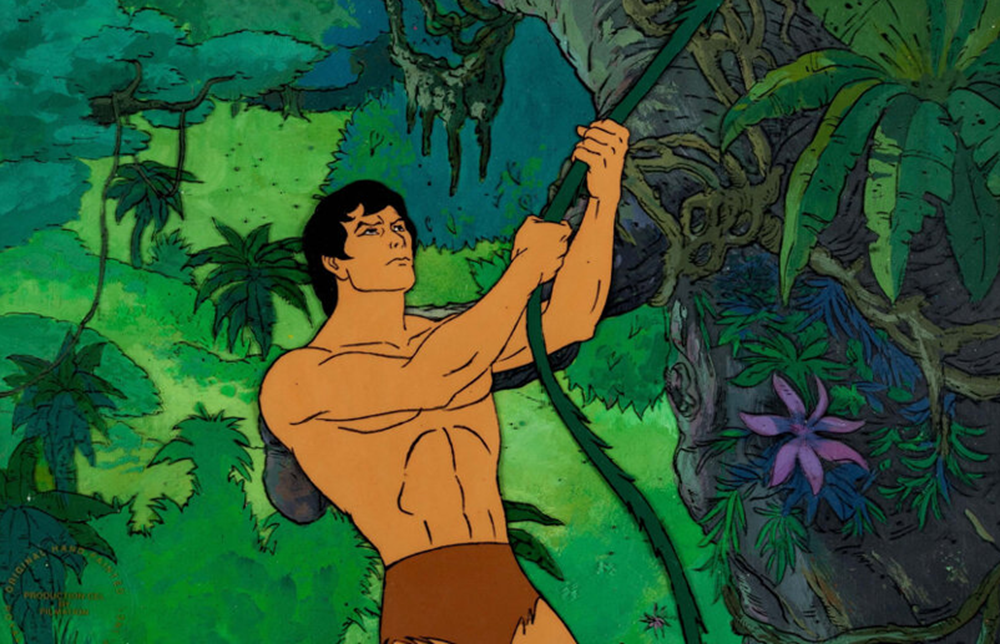
Filmation’s Tarzan was intelligent and well-spoken, accompanied – as in the books – by his monkey companion N’Kima. Cheetah – a creation of the Johnny Weismuller films – was nowhere to be seen, and Jane appeared just once in the season four episode “Tarzan and Jane.” The show premiered on CBS in September 1976, its first episode introducing Queen Nemone of Zandor, with subsequent adventures involving jungle Vikings, the Monkey People, the graveyard of the elephants, and more, with no shortage of Tarzan swinging from vine to vine, bellowing a famous cry that once rang out across playgrounds the world over.
Tarzan came back for a second season in 1977 as part of The Batman/Tarzan Adventure Hour, and third and fourth seasons in 1978 and 1979 under the title The Super 7 alongside The New Adventures of Batman, The Freedom Force, Manta and Moray, Superstretch and Microwoman, Web Woman, and the live-action Jason of Star Command. 1980 and 1981 also saw Tarzan on the schedules – paired with The Lone Ranger and Zorro – but no new episodes were produced for the latter two runs. Although big-haired live-action lord of the jungle Ron Ely is the first name most think of when they picture Tarzan, it’s Filmation’s version that holds a special place in the hearts of much of Generation X, and the world is a sadder place than if echoing his famous cry were deemed socially acceptable.
Big John, Little John (NBC): Besides Monster Squad, D’Angelo-Bullock-Adams Productions had two other shows debut in 1976 – McDuff, the Talking Dog and this show, probably the best remembered of the three, at least in the UK where it was shown on BBC1. William P D’Angelo flew solo on this one, partnering with Gilligan’s Island and The Brady Bunch creator Sherwood Schwartz for the story of a middle-aged man – lead actor Herb Edelman was forty-two-years-old but appeared much older – who accidentally drinks from the fountain of youth while on holiday in Florida.
The magical waters turn Big John – and Edelman was 6’ 5” tall! – into Little John, his twelve-year-old self, but only temporarily. Unfortunately for John, it happens randomly and – because this is a sitcom – often at the most inopportune times, leaving wife Marjorie and son Ricky (who both know his secret) to explain Little John away as Big John’s nephew. Joining Edelman in the regular cast were Robbie Rist (hated as Cousin Oliver in The Brady Bunch) as his younger self, Joyce Bulifant (Schwartz’s first choice for Carol Brady) as Marjorie, and Mike Darnell – who would become the king of reality TV at Fox, with such hits as When Animals Attack! under his belt – as Ricky.
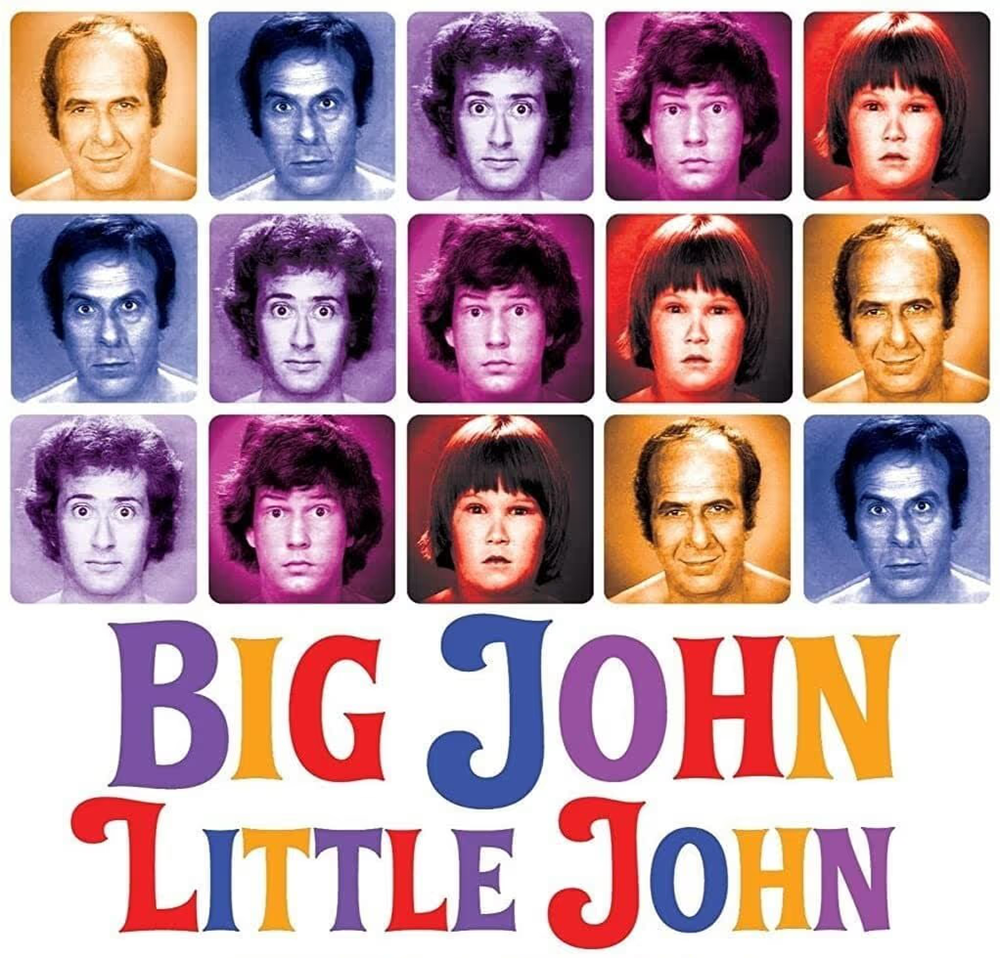
Scrapes involving the Big/Little Johns included being cast as both Captain Hook and Peter Pan in the school play, a poor Sheriff getting in hot water for jailing a child he thought was an adult, and Big John speaking with Little John’s voice (and vice versa). It was farce, of course, but it had an undoubted charm that should have outlived the customary thirteen episodes, any thoughts of a second season put paid to by the big ratings garnered by The Krofft Supershow on ABC in its timeslot.
DBA Productions tried again in 1977 with The Red Hand Gang but the three-man writing team that scripted the final episode of Big John, Little John would perhaps be the show’s greatest gift to comedy. Four years later, Jerome Zucker, James S Abrahams, and Davis Samuel Zucker wrote and directed Airplane!, giving Joyce Bulifant a part as the mother to a seriously ill girl on the misbegotten flight.
The Scooby-Doo/Dynomutt Hour (ABC): Although Scooby-Doo, Where Are You! (and The New Scooby-Doo Movies that followed) was in constant rotation on Saturday mornings and in syndication throughout the western world, there had been no new episodes of the canine detective’s adventures produced since 1973’s “The Haunted Carnival.” In September 1976, however, The Scooby-Doo/Dynomutt Hour not only gave the world new tales featuring Scoob, Shaggy, and a bunch of no-goodniks who would have gotten away with it if it wasn’t for those meddling kids, it also introduced a brand-new dog character.
Dynomutt had the obligatory “created by Joe Ruby and Ken Spears” credit but it’s clear to those with an interest in such things that the robotic dog and his superhero master the Blue Falcon were very much designed by Alex Toth, the man responsible for creating Space Ghost, The Herculoids, and Birdman for Ruby-Spears’ previous employers Hanna-Barbera. Blue Falcon was secretly millionaire socialite Radley Crown (voiced by Space Ghost’s Gary Owens), who created Dynomutt (Frank Welker) to help him fight crime in Big City.
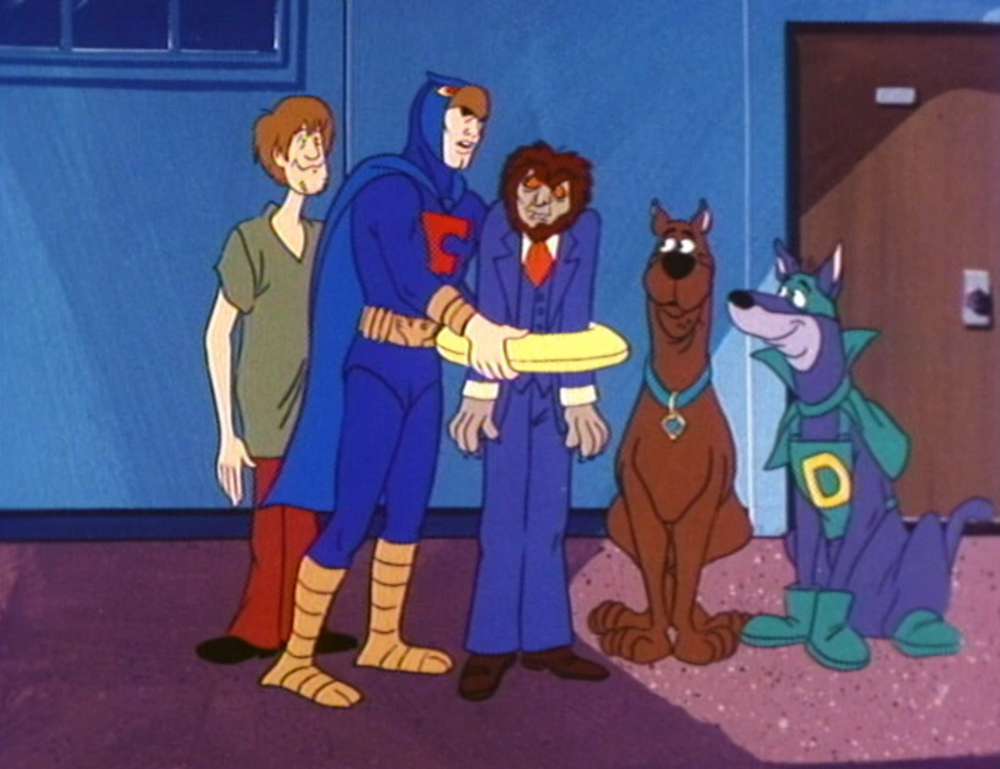
The first two episodes of Dynomutt, Dog Wonder featured the Scooby gang, who were also present in their own adventures on haunted building sites, at frightful fiestas, in spooky swamps, and with eerie electrical eidolons. The Scooby gang was swelled by the arrival of Scooby-Dum, the Great Dane’s bumpkin cousin, whose appearances were few enough that he didn’t become an annoyance (the debut of Scrappy-Doo was still three years away). The cast from the final season of Scooby Doo, Where Are You! and The New Scooby-Doo Movies returned to voice the characters in these new episodes, which retained the classic flavour, something noticeable – or rather not – when the format was expanded by half-an-hour in December 1976 to accommodate re-runs of Scooby-Doo, Where Are You! alongside the 1976 vintage.
In 1977, both Blue Falcon and Dynomutt and The Scooby-Doo Show became part of the two-hour Scooby’s Laff-a-Lympics block, alongside Laff-a-Lympics itself, Captain Caveman and the Teen Angels, and re-runs of classic Scoob. Just four new episodes of Dynomutt were produced to go along with the sixteen from season one, while The Scooby-Doo Show added forty new mysteries to the original series’ forty-one (and twenty-four New Scooby-Doo Movies). Since their original show, Blue Falcon and Dynomutt have made several guest appearances in other Hanna-Barbera productions, notably the meta-adventures of Harvey Birdman, Attorney at Law, and had a significant role in the otherwise dreadful 2020 movie Scoob!, where it was revealed the superhero had formed Falcon Force with Atom Ant, Jabberjaw, Captain Caveman, and Grape Ape, the kid of mythology they really should teach in schools.
The Kids from CAPER (NBC): Although it was created by Romeo Muller, the scriptwriter for the beloved Rankin/Bass Christmas Christmas Specials, the fingerprints of Stanley Z Cherry and Don Kirshner were all over The Kids from CAPER. The pair had worked on The Monkees, for which Cherry was a writer and Kirshner the music supervisor, and the same madcap energy and musical numbers were seeded throughout this later show, produced by Alan Landsberg Productions (later responsible for That’s Incredible!, The Krypton Factor, and Kate & Allie).
The titular Kids from CAPER were PT (the cool one, played by Steve Bonino), feisty Bugs (Cosie Costa), food obsessed Doomsday (Biff Warren), and Doc (John Lansing), the brains of the operation. They were agents of the Civilian Authority for the Protection of Everybody, Regardless, based in the fictional city of Northeast Southwestern, helping the local police solve mysteries with the aid of the Caperband radios (actually repurposed Mego Star Trek communicators, as were those used by the Monster Squad).
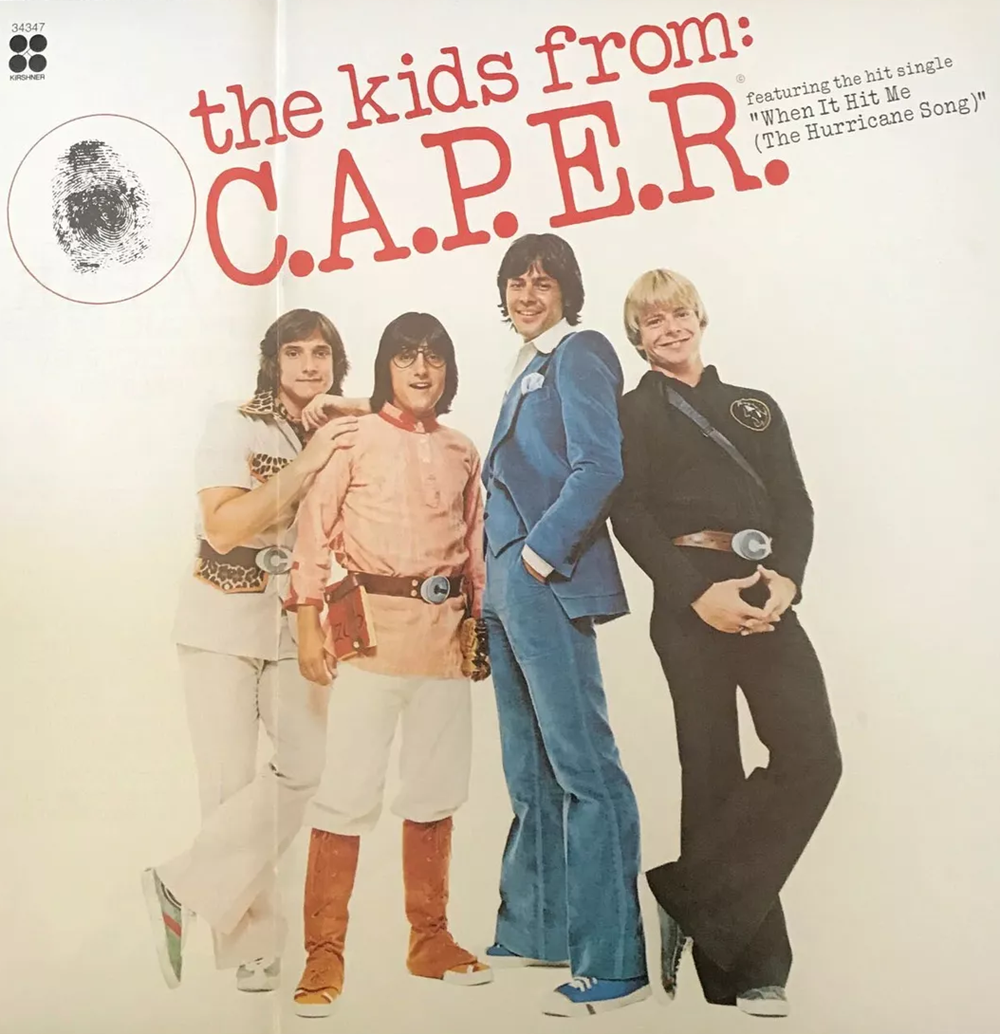
Each episode not only saw the Kids from CAPER pressed into action to save the world from very silly peril, but they also contained a song, played out in short and long form during the episode, and a soundtrack album was released on Kirshner records, although – curiously, perhaps because it was not written by Kirshner – it omits the theme music. The Kids from CAPER debuted on September 11th 1976, as part of a three-hour block of live-action shows on NBC that also featured Big John, Little John, Land of the Lost, McDuff, the Talking Dog, Monster Squad, and Muggsy, an experiment which largely failed in the face of animated opposition, although the network did try a ninety-minute block (with all new shows) a year later.
Thirteen episodes of The Kids from CAPER were produced but only eleven were shown during its initial run. The final two were shown as part of a re-run of the series a year later but that’s the last the world heard from these musical crimefighters and largely the people who portrayed them, although John Lansing did go on to work as a writer and producer for shows such as Renegade and Walker, Texas Ranger.
Next time on The Telephemera Years: To celebrate the blockbuster success of Godzilla x Kong: The New Empire, we take a detour to the Saturday Morning shows featuring the pair!
Check out our other Telephemera articles:
The Telephemera Years: pre-1965 (part 1, 2, 3, 4)
The Telephemera Years: 1966 (part 1, 2, 3, 4)
The Telephemera Years: 1967 (part 1, 2, 3, 4)
The Telephemera Years: 1968 (part 1, 2, 3, 4)
The Telephemera Years: 1969 (part 1, 2, 3, 4)
The Telephemera Years: 1970 (part 1, 2, 3, 4)
The Telephemera Years: 1971 (part 1, 2, 3, 4)
The Telephemera Years: 1973 (part 1, 2, 3, 4)
The Telephemera Years: 1974 (part 1, 2, 3, 4, 5)
The Telephemera Years: 1975 (part 1, 2, 3, 4)
The Telphemera Years: 1976 (part 1, 2, 3)
The Telephemera Years: 1977 (part 1, 2, 3, 4)
The Telephemera Years: 1978 (part 1, 2, 3, 4)
The Telephemera Years: 1980 (part 1, 2, 3, 4)
The Telephemera Years: 1981 (part 1, 2, 3, 4)
The Telephemera Years: 1982 (part 1, 2, 3, 4)
The Telephemera Years: 1983 (part 1, 2, 3, 4)
The Telephemera Years: 1984 (part 1, 2, 3, 4)
The Telephemera Years: 1986 (part 1, 2, 3, 4)
The Telephemera Years: 1987 (part 1, 2, 3, 4)
The Telephemera Years: 1989 (part 1, 2, 3, 4)
The Telephemera Years: 1990 (part 1, 2, 3, 4)
The Telephemera Years: 1992 (part 1, 2, 3, 4)
The Telephemera Years: 1995 (part 1, 2, 3, 4)
The Telephemera Years: 1997 (part 1, 2, 3, 4)
The Telephemera Years: 1998 (part 1, 2, 3, 4)
The Telephemera Years: 1999 (part 1, 2, 3, 4)
The Telephemera Years: 2000 (part 1, 2, 3, 4)
The Telephemera Years: 2002 (part 1, 2, 3, 4)
The Telephemera Years: 2003 (part 1, 2, 3, 4)
The Telephemera Years: 2005 (part 1, 2, 3, 4)
The Telephemera Years: 2006 (part 1, 2, 3, 4)
The Telephemera Years: 2008 (part 1, 2, 3, 4)
The Telephemera Years: O Canada! (part 1, 2, 3, 4)
Titans of Telephemera: Irwin Allen
Titans of Telephemera: Stephen J Cannell (part 1, 2, 3, 4)
Titans of Telephemera: DIC (part 1, 2)
Titans of Telephemera: Hanna-Barbera (part 1, 2, 3, 4, 5)
Titans of Telephemera: Kenneth Johnson
Titans of Telephemera: Sid & Marty Krofft
Titans of Telephemera: Glen A Larson (part 1, 2, 3, 4)

